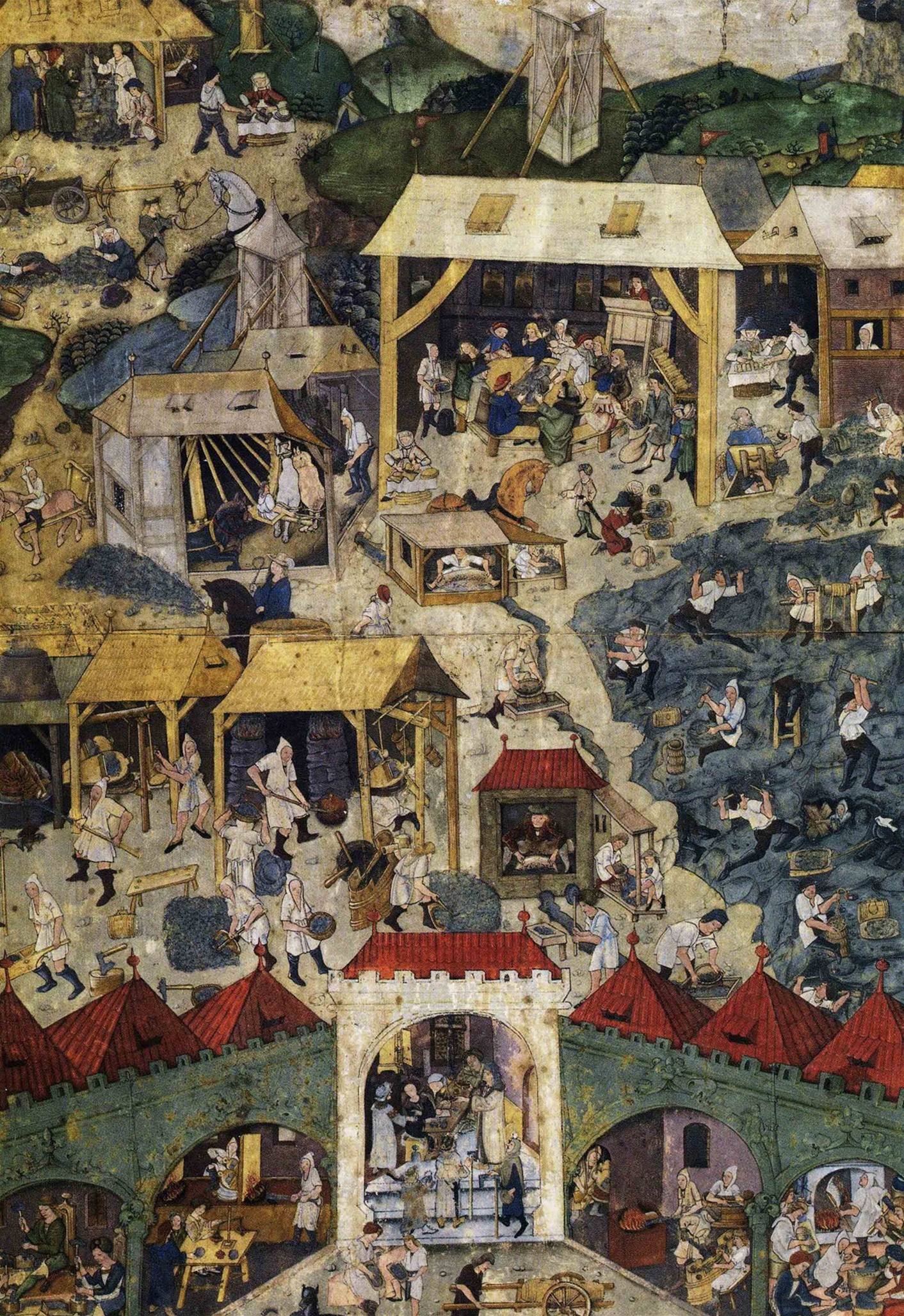|
Uhlířské Janovice
Uhlířské Janovice (german: Kohljanowitz) is a town in Kutná Hora District in the Central Bohemian Region of the Czech Republic. It has about 3,200 inhabitantas. Administrative parts Villages of Bláto, Janovická Lhota, Kochánov, Malejovice, Mitrov, Opatovice II and Silvánka are administrative parts of Uhlířské Janovice. Geography Uhlířské Janovice is located about southwest of Kutná Hora and southeast of Prague. It lies in the Upper Sázava Hills. The highest point is the hill Dračí skála at above sea level. The Výrovka River springs here and flows across the municipal territory. History The first written mention of Uhlířské Janovice is from 1352. It was founded by Jan of Sternberg, probably in 1250. The town was owned by the Sternberg family until 1750, when it was merged with the Rataje estate. Sights There are three churches. The landmark of the town square is the Church of Saint Aloysius. It was built in the late Baroque style in 1767–1795. The ... [...More Info...] [...Related Items...] OR: [Wikipedia] [Google] [Baidu] |
Obec
Obec (plural: ''obce'') is the Czech language, Czech and Slovak language, Slovak word for a municipality (in the Czech Republic, in Slovakia and abroad). The literal meaning of the word is "Intentional community, commune" or "community". It is the smallest administrative unit that is governed by elected representatives. Cities and towns are also municipalities. Definition Legal definition (according to the Czech code of law with similar definition in the Slovak code of law) is: ''"The municipality is a basic territorial self-governing community of citizens; it forms a territorial unit, which is defined by the boundary of the municipality."'' Every municipality is composed of one or more cadastre, cadastral areas. Every municipality is composed of one or more administrative parts, usually called town parts or villages. A municipality can have its own flag and coat of arms. Czech Republic Almost whole area of the republic is divided into municipalities, with the only exception be ... [...More Info...] [...Related Items...] OR: [Wikipedia] [Google] [Baidu] |
Kutná Hora
Kutná Hora (; medieval Czech: ''Hory Kutné''; german: Kuttenberg) is a town in the Central Bohemian Region of the Czech Republic. It has about 20,000 inhabitants. The centre of Kutná Hora, including the Sedlec Abbey and its ossuary, was designated a UNESCO World Heritage Site in 1995 because of its outstanding architecture and its influence on subsequent architectural developments in other Central European city centres. Since 1961, the town centre is also protected by law as an urban monument reservation, the fourth largest in the country. Administrative parts The town is made up of twelve town parts and villages: *Kutná Hora-Vnitřní Město *Hlouška *Kaňk *Karlov *Malín *Neškaredice *Perštejnec *Poličany *Sedlec *Šipší *Vrchlice *Žižkov Geography Kutná Hora is located about east of Prague. It lies on the Vrchlice stream. The eastern part of the municipal territory lies in a flat agricultural landscape of the Central Elbe Table lowland. The western part lies i ... [...More Info...] [...Related Items...] OR: [Wikipedia] [Google] [Baidu] |
Cities And Towns In The Czech Republic
A city is a human settlement of notable size.Goodall, B. (1987) ''The Penguin Dictionary of Human Geography''. London: Penguin.Kuper, A. and Kuper, J., eds (1996) ''The Social Science Encyclopedia''. 2nd edition. London: Routledge. It can be defined as a permanent and densely settled place with administratively defined boundaries whose members work primarily on non-agricultural tasks. Cities generally have extensive systems for housing, transportation, sanitation, utilities, land use, production of goods, and communication. Their density facilitates interaction between people, government organisations and businesses, sometimes benefiting different parties in the process, such as improving efficiency of goods and service distribution. Historically, city-dwellers have been a small proportion of humanity overall, but following two centuries of unprecedented and rapid urbanization, more than half of the world population now lives in cities, which has had profound consequences for g ... [...More Info...] [...Related Items...] OR: [Wikipedia] [Google] [Baidu] |
Friedrich Ritter Von Friedländer-Malheim
Friedrich Friedländer, later Friedrich Ritter von Friedländer-Malheim (Mahlheim) (January 10, 1825 – June 13, 1901), was a Bohemian-Austrian painter. Friedländer was born in Kohljanowitz/Uhlířské Janovice, Bohemia. He studied at the Vienna Academy, and later under Ferdinand Georg Waldmüller, and visited Italy in 1850, Düsseldorf in 1852, and finally Paris Paris () is the capital and most populous city of France, with an estimated population of 2,165,423 residents in 2019 in an area of more than 105 km² (41 sq mi), making it the 30th most densely populated city in the world in 2020. S .... He is associated with the Düsseldorf school of painting. He devoted himself at first to historical pictures, creating a genuine sensation with his painting entitled "''The Death of Tasso''". After 1854 he painted genre pictures exclusively, taking his subjects chiefly from military life and the local life of Vienna. His scenes from Swabian folk-life are well known. ... [...More Info...] [...Related Items...] OR: [Wikipedia] [Google] [Baidu] |

